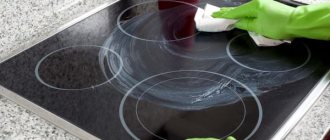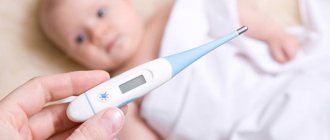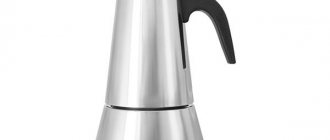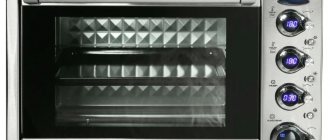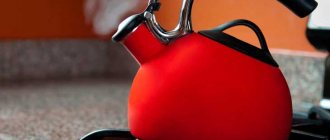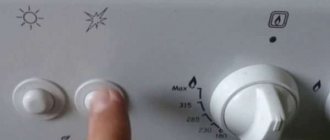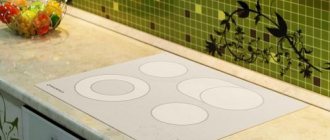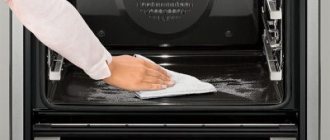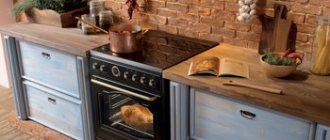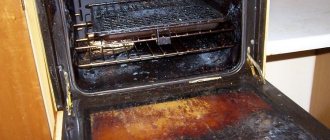Types of probes and their purpose
If you are still wielding a knife and fork, piercing chicken, duck or boiled pork to check readiness, know that you are ruining the dish. A thick point damages the fibers, causing the product to lose its juice.
The simplest probe without a thermometer
Checking the doneness of meat and poultry using a probe is an old method that appeared long before the invention of electronic thermometers. Previously, this tool was actively used by professional chefs in cafes, canteens and restaurants. The simplest tools were thin and sharp steel pins with a handle. Long needles were made of solid stainless steel.
We used the probe simply - we stuck a long needle between the fibers of the meat, so as not to damage the integrity of the piece, to the middle, and then evaluated the result. If signs of a raw product remained on the metal, cooking continued.
Simple needle probes are also used to determine the quality of raw meat. The device takes samples from the depths of a carcass or piece for bacteriological and microbiological studies.
Types of probes for temperature control
Modern devices are supplemented with thermometers. Monitoring the heat level is important to properly cook meat and poultry. Different types of meat require different heating temperatures. For large pieces, it is the temperature inside that is important, not the readings of the oven thermometer. For example, beef should be cooked at 65-75 degrees, and pork at 90.
Probes for determining the temperature inside the product are divided according to the type of thermometer into electronic, mechanical and alcohol-based.
Electronic ones are more accurate, compact and convenient. The digital thermometer instantly calculates the temperature in the thickness of the piece, and the display displays it. Models are sold with memory and advanced functions that help determine the cooking time for different dishes. The line of electronic probes has options with a built-in and remote thermometer.
Mechanical ones with a pointer and a dial are simple in design and operation. The temperature is displayed on the scale, and some manufacturers describe the types of meat and the degree of frying for the convenience of housewives. Round thermometers are convenient for frying in a gas grill pan with a glass lid, as they do not take up much space in height.
An alcohol probe for measuring meat temperature works on the same principle as a thermometer for water or air. The cheapest variety. It takes time to get accurate values.
The design and principle of operation of an oven temperature probe
Oven temperature probes can be included with your oven, supplementing a standard thermometer. In this case, the accessory is connected to a special connector in the oven, and the temperature is displayed on an external thermometer. The advantage is that you only need to make one puncture. In advanced ovens, oven power control is adjusted automatically based on the temperature probe readings.
Some devices are wired and wireless . Wireless models are convenient because the cord does not interfere with closing the oven door tightly, and you can control the baking without being in the kitchen. Electronic temperature probes consist of a thermometer with display and a stainless steel probe with a heat-resistant cord. Power usually requires readily available batteries. Compact devices have a built-in thermometer.
How to use a meat probe:
- Insert a steel needle into the product, and place a remote thermometer outside the oven.
- Next, set the desired temperature or set the cooking mode taking into account the type of dish, if the capabilities of the temperature probe allow this.
- During the cooking process you don’t even have to open the oven, just watch the thermometer. And if the device is equipped with the ability to configure programs, then a signal will indicate readiness.
More detailed instructions should be found in the kit with the devices or on the manufacturer’s website. All models are different, so there may be nuances and differences.
Interesting in this series are temperature probes with two thermometers - one shows the temperature in the oven, and the second shows the temperature of the product. This option is convenient for those who have a broken thermometer in the oven or are cooking in the oven.
Why is there a temperature probe in the oven?
- Automatic oven programs
- Special functions of electric and gas ovens
- Gas stove oven thermometer
The thermal probe function is designed to automatically determine the readiness of a dish. This function is available only in electric ovens. When using this function, all cooking information is displayed on the display, namely the temperature of the dish being prepared, for example meat.
Types of thermal probes:
- Wired - found in many oven models. It is stored separately from it. The thermal probe is connected to a special channel in the oven.
- Wireless - stored in the oven door. Does not require connection to a control channel, and is considered the most convenient to use. It is available in more “advanced” oven models.
A wired temperature probe is also called a temperature probe or thermal probe. It is the probe that provides control of the temperature of the dish. The thermal probe itself is designed in the form of a needle, connected to the control center of the oven.
One end of the temperature probe is connected to the oven itself, and the other is inserted into the inside of the dish. The temperature at which the product is ready is set independently by looking at the oven instructions. Each cooking product has its own temperature setting. As soon as the set temperature is reached, the oven switches off or beeps. A wired temperature probe is found in ovens manufactured by Bosch, Asko, Electrolux, Hansa, Gorenje, as well as other brands.
A wireless temperature probe is available in ovens from the German manufacturer Miele. This type of temperature probe is already built into the oven. There is only the probe itself, which is inserted into the dish. Miele also calls the wireless probe a “food temperature probe” . It measures the temperature inside the dish itself. This function displays the remaining cooking time of the product on the display. The food temperature probe function provides precise control of the prepared dish. We ourselves do not need to check its readiness.
Recommendations for using a temperature probe:
- when using a temperature probe, the temperature of the dish and, if necessary, the oven temperature are set;
- for better cooking, the thermal probe must be inserted into the thickest part of the product;
- after cooking is complete, handle the probe carefully, as it gets very hot in the oven;
- The temperature probe should not be left in the oven;
- It is not recommended to use a wired temperature probe above 230°C;
- not used for thin cuts of meat.
Not all oven models have a temperature probe function. Where present, wired and wireless thermal probes are connected to the center of the oven. They depend on the oven and only work in conjunction with it. But besides them, there are also separate thermal probes that are not connected to the oven. Unlike the temperature probe function, individual thermometers only show the temperature of the food.
Types of thermometers:
- The electronic type of thermometer is not used inside the oven. It is used only when the dish is pulled out. Afterwards you can determine the readiness temperature. termoschup-003.jpg
- A mechanical thermometer is used exclusively in the oven. It is inserted into the raw product and cooked with it. The temperature is determined by the needle on the thermometer.
- A digital thermometer is used not only for hot dishes, but also for cold dishes. It cannot be used in the oven.
Feature benefits:
- the dishes turn out tasty and juicy, especially dishes made from meat products;
- guarantees high-quality cooking;
- makes it easier to prepare food.
Differences between the temperature probe function and thermometers:
- built-in temperature probes show the temperature on the oven display;
- after the dish is ready, the oven turns itself off; can work simultaneously with automatic programs;
- There is no need to control the cooking process, unlike thermometers.
Many people believe that a temperature probe is necessary for the oven. Especially for those who do not have time to control cooking and have little free time. But there are also those who believe that it is useless or is not used. More often, an oven with a thermal probe is purchased by professional chefs. Ovens with a temperature probe function are so “advanced” that they themselves control the cooking process and turn off the oven after completion.
- How to choose a good inexpensive oven
- Which is better, gas or electric oven?
- Stirrer technology in the oven
Zanussi oven
How to choose an electronic oven probe
When choosing a meat temperature probe, start by assessing the quality and strength of the needle, and only then move on to studying the functions and reliability of the thermometer.
Which probe is better and more reliable?
The working part of the probe comes in different types:
- In the form of a thick short needle - suitable for small pieces of meat, cooking cutlets, grilling. Thickness and strength are important here, but for small pieces and minced meat there is no point in being picky about this parameter.
- In the form of a long awl. This probe is needed for roasting carcasses and cooking in the oven. A point that is too short is inconvenient - you may not reach the center. If you plan to cook carcasses and large pieces, choose a durable device made of solid steel. Otherwise, the needle may bend and hit bone or cartilage.
- Fork-shaped with two sharp needles. As a rule, such forks are not very long, they are convenient for grilling and serve not only for controlling cooking, but also for turning food. For tender types of meat, it is better not to use a double probe - the fewer punctures, the better.
Stainless steel is the best material for a dipstick. Stainless steel is easy to wash and disinfect; it is not afraid of heat and water. The steel should be hard and the tip sharp. A thin working edge is important to ensure that the fibers remain intact and the juice does not leak out during the frying process.
The length of the probe depends on the products. For poultry carcasses, boiled pork, cutlets, steaks and schnitzel, a needle of up to 10 cm is sufficient. For larger ones, it is better to buy a professional tool of at least 15 cm. However, do not forget that the temperature must be measured in the middle of the piece, so focus on half the thickness of the product.
Compact folding meat probes with the ability to measure temperature are convenient for storage, since the sharp part is removed. Suitable for home purposes. Some manufacturers include protective covers in the kit. Silicone covers are comfortable and safe.
How to use a food thermometer for meat dishes
A meat thermometer should be inserted into the dish during the final stages of cooking. In this case, you need to insert the rod deeply into the product in order to measure the temperature in the middle of the piece you are cooking. Contact of the device rod with bone, cartilage, and fat should be avoided, since their temperature conditions may differ from those of the pulp. You should not resort to using the temperature probe too often: by making punctures, you provoke the leakage of juice, as a result of which the meat may turn out to be too dry.
- How long does it take to pump up six-pack abs at home?
- Chicken batter: recipes
- What is reposting on social networks
Review of popular models and their capabilities
For example, consider different probe options for cooking meat in the oven, in a frying pan and on the grill, as well as models with advanced capabilities.
The Endever Smart-06 temperature probe with LED display and backlight operates in the temperature range from 0 to 250 °C. Requires four AAA batteries for power supply. The meter cord is heat-resistant and can come into contact with food. There are automatic modes of six degrees of roasting for eight types of meat, a forward and reverse timer, and wireless data transmission. The device can be set up and left in the dish being prepared. It will indicate readiness with a sound signal.
The Chinese electronic meat thermometer with a stainless steel probe TP101 operates in the range from – 50 to +300 °C. This wide coverage makes the compact device almost universal. You can cook anything with it - from cottage cheese and dough to grilled meat and sausages, leaving it in the oven. The length of the working needle is 15 cm. For power, you only need a 1.5V coin cell battery. Attractive price - you can buy a dipstick for as little as 350 rubles in online stores. Suitable for outdoor barbecue.
The KU-007 mechanical probe thermometer measures meat temperature from 30 to 100 ºС. It can be used both for temperature checking and during cooking in the oven, since the heat-resistant steel body can withstand heat up to 300 degrees. Needle length 11 cm. Convenient for barbecue and outdoor grilling.
Temperature probes help not only when cooking meat; they are convenient for measuring the temperature of dough, dough, milk, drinks and other dishes. If you have children or pets, such a device will ensure that baby or special food is comfortable to eat.
Be sure to have at least one probe with a thermometer in the kitchen so that the dishes are always tasty and properly prepared! But don't forget to adjust the heat to achieve the desired result.
How to choose a thermometer for the kitchen and what it is needed for
A kitchen thermometer is one of the first instruments a novice cook should buy. Well, professionals have no idea how they can manage in the kitchen without this simple but extremely useful gadget. Fortunately, you can purchase a thermometer for a very modest amount, and the benefits it can bring are invaluable.
Let's take a look at the situation with kitchen thermometers on the modern market and try to decide what is best suited to solve our problems.
What is a kitchen thermometer used for?
As you might guess, a thermometer is needed to measure the temperature of a product during cooking or to measure the temperature in the space (oven or pan) in which the food is actually cooked. In both cases, the task before us is the same: to provide the temperature most suitable for preparing our dish.
The most common use of thermometers is for cooking meat. The reason for this is simple: at too high temperatures, the meat becomes tough or too dry (turns into “sole”). It’s very easy to ruin even the best piece of meat by leaving it in a frying pan or on the grill for a few extra minutes. Anyone who has learned to fry steaks knows this from their own experience. The same applies to cooking large pieces of meat in the oven: although many modern ovens allow you to set a certain temperature, not all of them are able to monitor the temperature with a sufficient level of accuracy. What can we say about the old gas models, which allow you to adjust only the height of the flame in the “more/less” mode.
Approximately the same situation is observed with the preparation of fish, overheating which is extremely undesirable.
With vegetables, the situation is a little simpler: since the cooking temperature of vegetables is significantly higher than that of meat, it will be much more difficult to “miss” the temperature. If we cook vegetables in a saucepan, then the situation does not require special temperature control at all: the vegetables are cooked at 100 degrees until done, and the only thing we risk is getting an overcooked product. In any case, this is not a matter of just a few minutes. If you are distracted for a while, then nothing bad will happen (unlike the same steak, where a difference of several degrees means a fundamentally different degree of frying).
Advanced cooks use a thermometer to perform more specific tasks - monitoring the condition of baked goods, fermenting dairy products, making caramel, etc.
Finally, thermometers are widely used to monitor the temperature of liquids. Here we can think of lovers of specific types of tea (requiring a specific temperature for brewing), coffee geeks who brew coffee by hand in a pour over or Chemex, and those who understand wine (which, as is known, “opens up” best at a certain temperature).
Finally, a thermometer can be useful for most common everyday tasks. For example, to control the temperature of baby food.
How does a thermometer work?
The operating principle of traditional thermometers is based on the laws of physics: when heated, a substance expands, and when cooled, it contracts. Mechanical and liquid thermometers work on this principle.
The former use bimetallic plates, which deflect the needle when heated, the latter are essentially similar to medical thermometers with a large range. The colored liquid expands and fills a tube attached to the scale.
In our digital age, many people still use such devices. In fact: if you already have a mechanical or liquid thermometer in your home, which you are used to and the accuracy of which you are sure of, there is not always a need to change it to a more modern and advanced model. If you handle the thermometer carefully, it will last a very, very long time.
However, most modern thermometers are electronic devices that rely on thermistors. A thermistor is a special resistor whose resistance changes depending on the ambient temperature. By changing the resistance, the device “understands” how much the temperature has changed.
In most cases, electronic thermometers provide higher accuracy and respond faster to temperature changes (and therefore provide more accurate data in real time rather than delayed). Of course, even among these devices there are outright defects, but if you choose among trusted brands, then the chance of encountering one tends to zero.
Thus, we see absolutely no reason to refuse to purchase an electronic thermometer in favor of outdated models, unless you are an ideological retrograde or a lover of antiquity. Even on batteries you won’t be able to save much money, since the energy consumption of most thermometers is very low. The main advantage of analog devices is their low price, as well as ease of cleaning: most often they can be washed under running water without fear that the electronics will fail. Even if water gets inside the case, in most cases the device will work properly after drying.
Measurement accuracy, errors and operating range
Every self-respecting thermometer must have instructions with it, which indicate its characteristics: operating temperature range, measurement accuracy and permissible errors, within the range of which the thermometer can “lie.”
When working with liquids, meat or vegetables, we are primarily interested in temperatures ranging from 30 to 100 degrees. For baking and working with the oven, you will need a significantly higher range - up to 200-250 degrees, and in some cases even higher.
Finally, in some specific cases you may need to measure the temperature inside your refrigerator or chest freezer. It is clear that here you need to pay attention to how well the device copes with measuring negative (Celsius) temperatures.
In general, the available temperature range is important, and it is highly advisable to familiarize yourself with this characteristic before purchasing a device.
As for measurement accuracy and error, most manufacturers of electronic thermometers claim that deviations in readings do not exceed 0.5-1 °C. This is more than enough to handle most culinary tasks.
If for some reason you require increased accuracy, then some devices are capable of providing measurement accuracy of up to 0.1 °C. Here, however, you need to be vigilant: despite the fact that many devices are capable of displaying readings with tenths of a degree, the measurement error indicated in their instructions can be 0.5 °C or even 1 °C. It is clear that in this case there will be little practical meaning in readings reflecting tenths of a degree.
What types of thermometers are there?
All kitchen thermometers can be divided into several categories depending on how they measure temperature. Some devices are capable of measuring the temperature only around them, others will allow you to find out the temperature inside the product, and others only on the surface.
Mechanical oven thermometers
The simplest option is a regular mechanical oven thermometer, which measures the ambient temperature. It is enough to place it inside the oven, after which you can monitor the readings through the glass door. The operating principle of such thermometers is quite simple, they rarely break down. But questions may arise regarding the accuracy of the measurement. However, deviations of a couple of degrees in the case of an oven, as a rule, will not greatly affect the final result.
Immersion liquid thermometers
Such thermometers work on the principle of a thermometer, which is well known to us all - that is, they show the temperature of the surrounding air or liquid in which they are immersed. The accuracy of such devices, as a rule, turns out to be quite high (if they were correctly calibrated at the factory), but the available temperature range in which the device can be operated may be quite small.
Probe thermometers
Probe thermometers, as the name implies, are equipped with a special needle-shaped probe that can be inserted, for example, into a piece of meat to find out the temperature inside the product. This thermometer can also be used to measure the temperature of liquids.
Despite the fact that there are a large number of mechanical probe thermometers on sale, the most widely used are electronic devices that display the results of the readings on a digital display.
Such a thermometer will do an excellent job of measuring the temperature of a steak or piece of meat, but you need to remember that in most cases it cannot be used inside the oven: the electronics and plastic case will not withstand high temperatures.
A solution to this problem can be the purchase of an electronic thermometer with a remote probe. For such devices, the probe is connected to the device using a special heat-resistant cable, which can be pulled inside the oven. The electronic unit will remain outside. This thermometer will work great in conjunction with a grill, barbecue or smokehouse. True, the remote probe also has its limitations (usually about +250 °C), and it will not be possible to measure too high temperatures with its help.
It is worth remembering that the probe thermometer can easily be damaged (for example, by accidentally dropping it), so you should handle it carefully.
Infrared thermometers
Finally, let's mention non-contact infrared thermometers. Such devices measure temperature remotely, determining it by thermal radiation. Using an infrared thermometer, you can measure the temperature of any surface or any product without coming into physical contact with it. In this case, the measurement range can reach several meters (however, as the distance increases, the measurement error also increases).
The price of such thermometers will be significantly higher, and the scope of application is very specific. They can easily measure the temperature of an empty pan (for example, when a recipe calls for frying at a certain temperature). It is also useful for preparing dishes that cannot be pierced with a probe thermometer (for example, so as not to spoil their appearance).
Remote control and transmission of readings
In the digital age, we are seeing the emergence of many gadgets equipped with additional functions that allow data to be transferred to a computer or mobile device (tablet or smartphone). Cooking thermometers were no exception.
The simplest function, available even for inexpensive electronic models, is the presence of a timer and a sound signal when the set temperature is reached. The practical benefits are obvious: using such a thermometer, you can detect the required cooking time or control the temperature of the product remotely. It is enough to set the desired temperature before starting cooking - and the device will notify you with a sound (squeak) that the temperature inside the piece of meat has reached the required values. The cook can thus freely do other things instead of standing at the stove waiting for the moment when it is time to turn off the heat or turn down the heat.
More sophisticated devices are capable of transmitting measurement data to a smartphone with a special application. The principle is the same: the cook receives an alert when the set temperature is reached, and he can be located at a considerable distance from the thermometer itself. This function will certainly come in handy for those who are used to cooking on an outdoor grill and want to move freely around their summer cottage.
The most “advanced” models of such thermometers allow you to connect several probes at once, reading readings independently of each other. In this way, you can measure the temperature in different parts of the product (for example, if a large piece of meat is being cooked) or control the preparation of several independent dishes/portions (pieces of meat). Finally, several independent probes allow you to cook several dishes at different temperatures. This is very convenient if in a company or large family there is no consensus on how well the steak should be cooked.
As for the companion application, its functionality can be significantly expanded with additional features that simplify the cooking process. Some apps plot temperature changes in real time, while others come with a set of recipes that allow the chef to automatically set the most appropriate temperature for cooking different types of meat.
Additional functions
As for additional functions and capabilities (besides those listed above), you can’t find many of them in thermometers.
- Almost all digital thermometers can display temperature in either Celsius or Fahrenheit.
- Some devices allow the possibility of calibration (correction of readings), with which you can correct the situation if the device begins to “lie” slightly. Some cooks even calibrate mechanical thermometers (there are many videos on Youtube about this).
- A number of mechanical thermometers, designed for specific applications, have special markings on the display to make the data easier for the user to read. So, for example, if you need a special thermometer to control the temperature of milk for coffee, then it makes sense to pay attention to models in which the desired temperature zone will be highlighted in a special color (they are called “barista thermometer”).
- However, it is worth remembering that in most cases these will be niche devices specifically designed to solve specific problems.
conclusions
A kitchen thermometer is not just useful, but a vital gadget that can provide an invaluable service to everyone who is interested in cooking. With its help, you can simplify and control the preparation of many traditional dishes, but in some culinary areas you can’t go without a thermometer.
Baking, preparing homemade ham or cooked sausages (and working with meat in general), brewing rare teas or properly preparing coffee all require precise temperature control. Of course, in most cases, professionals will be able to repeat the desired result without a thermometer, but if you do not consider yourself a professional and want to “pump up” your culinary skills, then a culinary thermometer is one of the first devices you should go to the store for.
You can start with an inexpensive electronic probe thermometer, which will be sufficient for most culinary tasks. Well, after you have accumulated some experience in use, you will understand what the thermometer of your dreams should be like - so that it most accurately matches the tasks assigned to it.
? Temperature probe for home use ✅
We have long planned to purchase a temperature probe for our home, but the purchase was constantly put off because the price tag was high, the manufacturer was questionable, or the design was ugly. And just recently, we saw such a device in our favorite Ikea store (for some reason we hadn’t seen it before), and, of course, bought it.
ℹ️ Information from the Ikea website:
Meat thermometer/timer, digital black
Measures temperatures up to 250 °C /480 °F. Heat-resistant wire can withstand temperatures up to 250 °C /480 °F.
Batteries are sold separately! Requires 1 LR03 AAA 1.5 V
Materials: Main parts: Synthetic rubber, Housing: Aluminum, ABS plastic, Stylus: Stainless steel, Magnet: Neodymium
the packaging looks like when purchased:
Inside there are instructions for use:
Wire length 1 meter (100cm).
Useful length of the probe is 16 cm.
The weight of the case including the battery is 78 grams.
The case is comfortable to hold in your hand (due to the rubberized insert around the perimeter).
The buttons are large enough (13mm in diameter) and easy to press.
For home the timer function is probably not needed, since usually there is a timer in the oven/stove, but for cooking meat and other food outdoors, this function can be useful.
A small addition: I started using a timer, because sometimes you need to time 1.5 minutes for frying, in this regard the timer turned out to be very useful! There is a second-by-second time report.
To switch to thermometer mode, COOK mode , set the temperature in Celsius, insert the temperature probe into the meat away from the bones (since they heat up faster than meat) and connect the wire to the thermometer. When the meat reaches the set temperature, a loud beep will sound .
How long to preheat the oven and how to a certain temperature?
Ovens purchased 20 years ago have the ability to heat up to 300°C with a full turn of the knob. If you turn on the gas by half, then, accordingly, the temperature in the oven will drop by half ─ to 150°C. Experienced housewives use different handle positions when heating the oven to the desired parameters.
Inexperienced cooks can rely on the following generally accepted standards:
- In all models of gas ovens, the oven is heated to 180°C over low heat in 25 minutes.
- If you turn on medium heat, this time will be reduced to 15 minutes.
- The fastest way to warm up a cabinet to 180°C is to let it burn on high heat for 5-7 minutes.
These recommendations will help you preheat the oven to 180 degrees, at which most dishes are baked.
For a biscuit, a temperature of at least 230-250°C is important. To determine the time for heating the oven to these readings, you need to conduct an experiment:
- Light a small fire in the oven.
- Place a piece of foil with a teaspoon of sugar on a baking sheet.
- Note the time and increase the burner flame.
- Record the moment when the sugar begins to melt at a temperature of 200°C.
This experience will help you find out the time for heating the oven to 180-200°C.
How to determine the temperature in the oven without a thermometer?
There are other proven methods for determining over time the degree of heating of the oven using improvised means. You will need:
If you doubt that the glow has reached the required temperature, then you can achieve the desired parameters using them using the methods described below.
Determining temperature using flour
The color of the flour will indicate what temperature the oven reached when it preheated. Do the following:
- Cover a baking sheet with parchment.
- Rub 1 tablespoon of flour over the entire area of the paper in small piles.
- Place the baking sheet in the middle slot of the preheated oven and note the time.
- Keep an eye on the period during which the color of the flour changes.
The color of the flour should change from white to dark brown. Depending on how long it takes the oven to heat up, draw a conclusion about the degree of its heat. In this case, use the following parameters:
- if the flour remains white within 1 minute, it means the oven temperature is below 180°C;
- yellowing after 30 seconds indicates that there is already 200°C;
- darkening to brown in 15 seconds is typical for 250°C;
- instant charring - 270°C and above.
This simple method was shared by experienced bakers who find it easy to determine the temperature in the oven without a thermometer.
Determining temperature using a white sheet of paper
Old home economics books recommend placing a notebook sheet in a heated place where the baked dish will be placed on a baking sheet and monitoring the charring time. Temperature data can be obtained from the following paper combustion parameters:
- within 5 seconds it becomes ash when the oven is heated to 270-300°C;
- if the sheet is charred in 15 seconds, then the cabinet has warmed up to 250-270°C;
- complete smoldering in 30 seconds will show that the heat has reached 230-250°C;
- the sheet turns black in 60 seconds, which means the oven is already at 200 degrees;
- The darkening time took 5 minutes - the cabinet heated up to 180°C;
- if the minimum temperature is below 150°C, the paper will only turn yellow.
This simple method works flawlessly, which is why many housewives use it in their cooking practice.
How to find out the temperature in the oven by marks?
A large number of modern cabinets have a specific temperature setting scale. In the instructions for them, manufacturers indicate the correspondence of the degree of heating to each division of the regulator. But these parameters differ for different models. We recommend writing down the data on a piece of paper and using it as needed.
It’s more difficult for those who have lost the instructions. Then to calculate the parameters you will need the following characteristics of the oven:
- Maximum temperature;
- how many divisions are marked on the thermostat knob.
There are some standard parameters for this technique. Thus, the maximum temperature in the oven of a gas stove is 250°C, and for electric stoves it is 280-290°C. If you divide this value by the number of divisions, you can set the temperature scale for the regulator. Please note that these data will be approximate, but they can be checked using the above methods and thus adjust the regulator.
What types of thermometers are there for a gas oven?
It is easy to control the cooking process using a thermometer, which can be purchased at a specialty store. Their range is quite large, and they all differ in their functionality and price. To choose a thermometer for a gas stove oven, you need to focus on their technical characteristics. Let's describe them in more detail.
- Analog thermometers are mechanical devices that oven manufacturers often build into ovens. They are quite easy to use and have a reasonable price. They are produced with a measurement range in the form of a dial or linear scale. Their error is small - up to ±1°C. Depending on the chosen model, they can be hung, installed on levels in the oven, or mounted in the oven.
- Digital instruments are electronic devices that measure temperature instantly. They are equipped with the following functions:
- set the cooking time;
- a sound signal notifies about the end of baking;
- regulate the preparation of fish and meat dishes, desserts;
- have different color temperature indications.
How to choose a thermometer for different ovens
There are some features when choosing a device for measuring temperature conditions for various types of ovens. Knowing these details will allow you to choose the most optimal model.
Which thermometer to buy for a gas stove oven
Most often, removable thermometer models are used for gas stoves, which can be installed on glass, a wall, or even a grate. Removable technology makes it easy to remove the device from the oven for rinsing and cleaning, which is required after each cooking. A special feature of models for gas stoves is their low price, which varies from 500 to 2,000 rubles. There are models for gas stoves that can simply be placed on the grate.
Electric oven thermometer
Most modern ovens are equipped with a built-in thermometer, which eliminates the need to purchase a separate device. If you need to maintain precise control, then the most acceptable option is to purchase a digital probe, which allows you to obtain the most accurate readings inside the dish. You can use remote options for the oven

